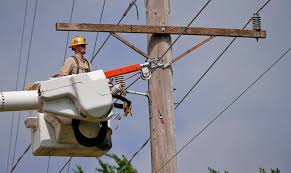
Oklahoma Gas and Electric is hoping to convince state regulators to approve a plan to raise rates on customers so improvements can be made to the utility’s aging transmission and distribution system.
The company filed a request Monday with Corporation Commissioners for approval of a cost recovery mechanism of a proposed five-year improvement plan. OGE contends the system is aging and 27% of its overall outages in 2019 were due to equipment failures and not by storms.
OGE wants to spend $89 million on projects the first year, $172.2 million in 2021 and $183 million each of the next three years to put about $810 million into the projects, overall.
If approved, an average OGE residential customer’s bill would increase 36 cents a month in the first year and $1.18 in 2021. Additional increases of about $1.20 would occur in the following three years.
A spokesman indicated the average increase over five years would be 1.7%.
“As we move into the 21st Century, the grid is facing new stresses and demands such as aging infrastructure, increasing customer expectations, more severe and frequent weather events, a heightened level of cyber and physical threats and a growing level of resources requiring two-way power flow,” stated Zachary Gladhill, OG&E’s director of grid innovation and integration in prepared testimony filed with the regulators.

OGE’s system covers 30,000 square miles and provides electricity for 790,000 customers. It includes more than 5,600 circuit miles of transmission line as well as 52 substations.
But the company operates 55,000 circuit miles of distribution line with 350 substations. More than 29,000 is comprised of overhead lines.
Gladhill also explained in the prepared testimony that the average OGE customer has many more electronic devices in a home compared to customers of a decade ago.
“But … OG&E’s grid is still based largely on 20th Century design and is comprised of assets that are at or nearing the end of life, in many cases. “The grid requires significant investment to ensure it is capable of transforming to a more modern grid that is capable of meeting the needs of its customers.”






